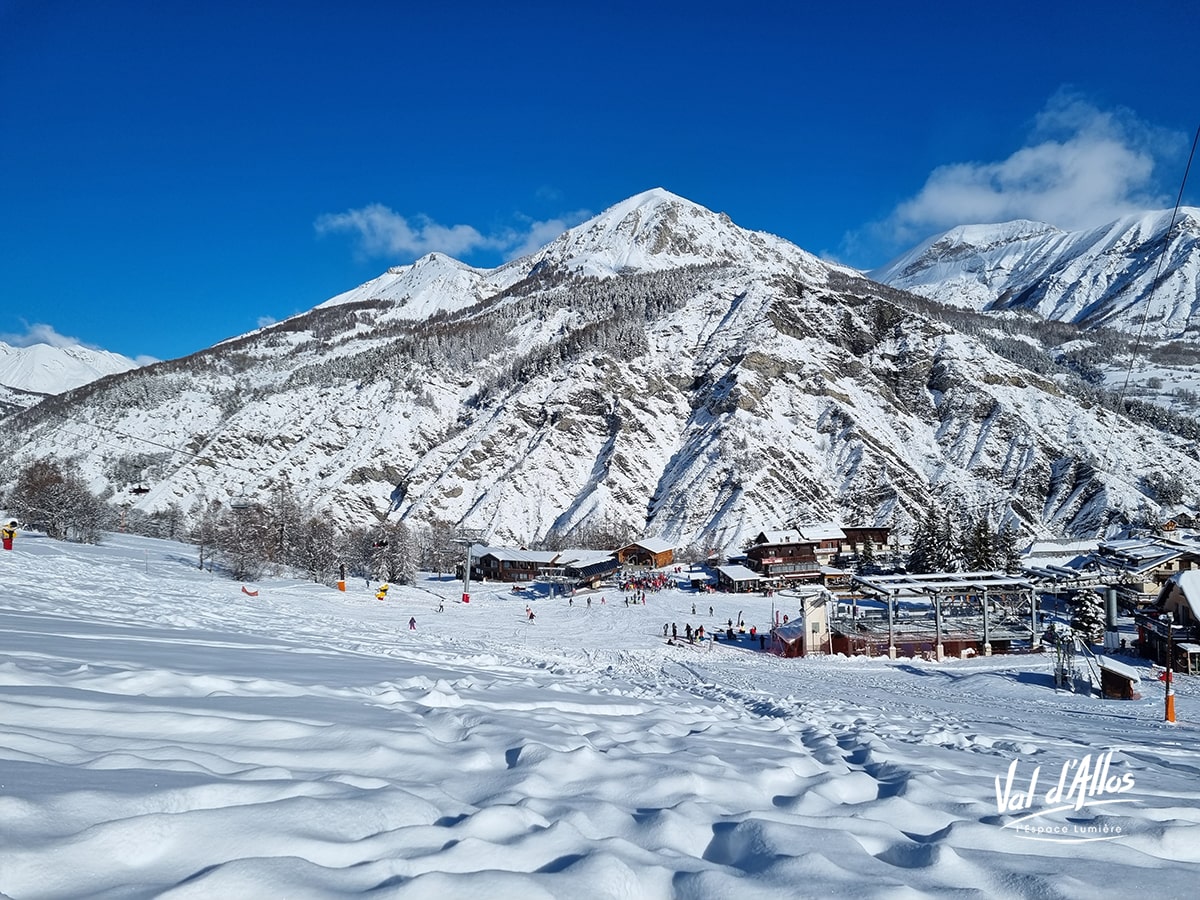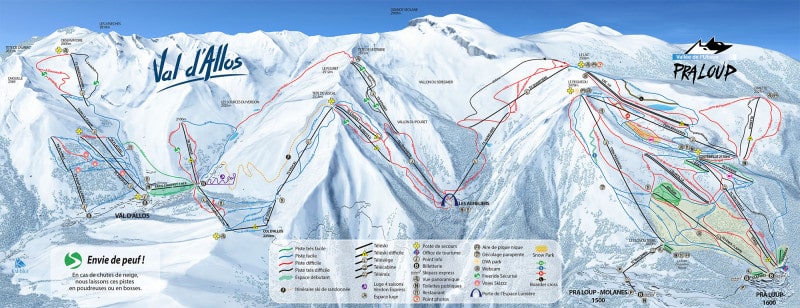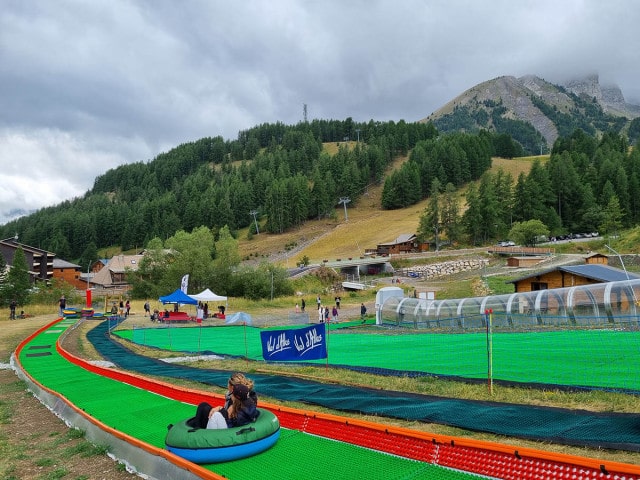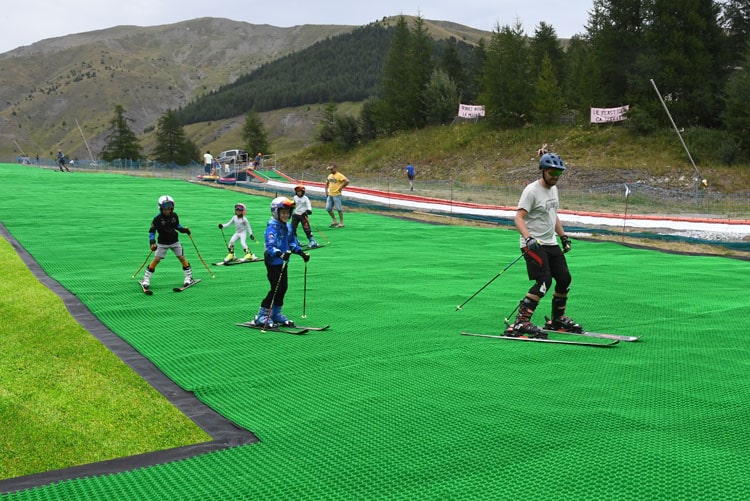
In July this year La Foux-d’Allos, a ski resort in the Southern French Alps, opened a dry ski slope made from green plastic for summer training.
La Foux-d’Allos is a medium-sized resort that is 2.5 hours from Nice Airport and is connected to L’Espace Lumière. Together the twin resorts offer an expansive ski area with 180km of skiing. The resort has a base elevation at Val d’Allos of 5,909ft (1,801m) and reaches an elevation of 8,533ft (2,601m) at its highest lifted point. There are 22 lifts and 32 groomed runs.

picture: Val d’Allos Website
The green plastic slope was erected in July and was intended to be there for a one-month trial, but due to the strong interest, it was decided to keep it until the fall. The dry-ski slope is 531ft (162m) long and 39ft (12m) wide and only costs $4 to use. Adjacent to it is a 60m tubing run ‘Le Tubby’ which can be used for $1.

The producer of the slope, Neveplast, an Italian firm that has installed similar systems all over Europe, the U.S., Russia, and Australia says that their product simulates real snow conditions very well. Their products are also often used in high-traffic areas, like loading and unloading at ski lifts or at water ramps.

While it sounds like a successful initiative, it appears the locals are not impressed. Apparently, more than 1,500 local French citizens have signed a change.org petition to get rid of the slide. The petition claims the cost of the slope was $300,000 which contradicts statements by the resort saying the cost was $100,000. It further claims that the dry slope destroys meadows and that there are dangerous microplastics coming from the dry slope. It also bemoans the carbon footprint it took for the two trucks required to bring it from Italy. Proponents point out that the carbon footprint of people traveling to glaciers for training would be far greater and that the material used is durable and can be reused.
Arguably it might not be the most aesthetically pleasing solution, but dry slopes seem to be an alternative to glacier skiing for clubs and teams wanting to train in the off-season. Considering the state of the glaciers worldwide, maybe training locally on a plastic slope is the lower carbon-foot print alternative to flying to the southern hemisphere.